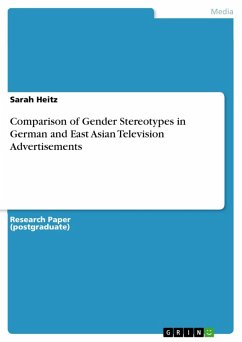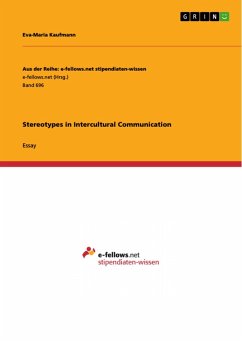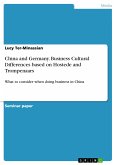Research Paper (postgraduate) from the year 2004 in the subject Communications - Intercultural Communication, grade: 1,3, University of Augsburg, course: Academic Writing, language: English, abstract: Stereotypes and prejudice are omnipresent and therefore influence every person in his or her perception. Undoubtedly, most of us are unaware of this fact. As a phrase from the "Handwörterbuch der Psychologie" states, "The prejudice of our own impartiality is the strongest prejudice of all"(Asanger, & Wenninger, p. 539). Gender stereotype refers to the subjective perception of what a male or female should be or how one should behave. For example, a stereotypic Hong Kong Chinese person would perceive that females should be gentle, sympathetic and shy, whereas males should possess strong personality and leadership abilities (Fung, & Ma, 2000). Gender roles can change in alignment with changes in society. However, the Arima (2003) study determined that television advertisements in Japan still depicted the old gender stereotype of "men at work and women at home", even though the rate of women attending college and of women in the working population has increased. Moreover, the younger generation in Japan supports the new gender stereotype of "men at work, women at both work and home". In the US, television advertisements reflected gender role expectations, as well. Products that are assumed to appeal to female customers are presented exclusively by a female main character. Respectively, products predominantly designed for men, are exclusively presented by male characters (Blain, & McElroy, 2002). Although gender representation has been studied extensively in the US, little is known about the portrayal of gender stereotypes in German and Asian television advertisements. This study proposes to fill this gap by analysing German television advertisements and by comparing the findings to the results of latest studies on gender stereotypes in East Asia.
Dieser Download kann aus rechtlichen Gründen nur mit Rechnungsadresse in A, B, BG, CY, CZ, D, DK, EW, E, FIN, F, GR, HR, H, IRL, I, LT, L, LR, M, NL, PL, P, R, S, SLO, SK ausgeliefert werden.









